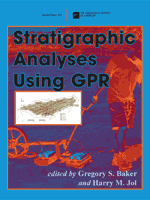:::: Started at the University of Toronto Mississauga on Sept. 1st, 2010 ::::
(A one-year appointment teaching and conducting research)
Teaching:
"GGR117 - Where on Earth?",
"GGR214 - Global Weather & Climate",
"GGR377 - Global Climate Change",
"GGR479 - Coastal Env."
Latest publications!
Mackenzie Drainage Basin Research Group:
Wolfe, B.B., Hall, R.I., Edwards, T.W.D., Johnston, J.W., 2011, A 5200-year record of
freshwater availability for regions in western North America fed by high-elevation runoff, Geophysical Research Letters 38, L11404, doi:10.1029/2011GL04759. And associated news release “5,200-year record warns of impending water shortages in western North America”.
Great Lakes - St. Lawrence Drainage Basin Research Group:
Thompson, T.A., Lepper, K., Endres, A.L., Johnston, J.W., Baedke, S.J., Argyilan, E.P., Booth, R.K., and Wilcox, D.A., 2011, Mid Holocene lake level and shoreline behavior during the Nipissing phase of the upper Great Lakes at Alpena, Michigan, USA, Journal of Great Lakes Research, doi:10.1016/j.jglr.2011.05.012.
I am currently leading efforts to finish a manuscript producing the most detailed paleohydrograph for Lake Superior that is needed for the International Joint Commission’s review of the Upper Great Lakes regulation plan (http://www.iugls.org/).
Starting a new research phase:
targeting critical water-level histories of the past millennia
in the Great Lakes-St. Lawrence and Mackenzie watersheds.
These data are urgently needed for managers to address
politically-charged debates concerning regulatory and industrial use of water resources.
:::: Research ::::
An integral part of two large and long-standing multi-disciplinary research groups
Addressing key questions concerning sustainable management of these delicate systems
Great Lakes - St. Lawrence Drainage Basin: Upper Great Lakes Regulation Plan Review
Mackenzie Drainage Basin: Bennett Dam regulation (Peace River) and Oil Sands water withdrawal (Athabasca River)
Reconstruct long-term perspective (patterns, directional change) to assess climate/human influence

:::: Research included in several special issues ::::
1. Journal of Great Lakes Research special issue on Lake Superior Research
2. Michigan Academician special issue on the Geology and Geomorphology of Lake Michigan's Coast
3. Aquatic Ecosystem Health and Management special issue on Lake Superior
4. Geological Society of America Special Paper: Advances in stratigraphic analyses using GPR
5. Journal of Paleolimnology special issue on the Great Lakes.

:::: Research Findings ::::
Abrupt Climate Change
(A 4-m-fall in Great Lakes water level 4,000 years ago / the largest
and most abrupt change in the last 4,000 years - cause being reevaluated)
(Lake-level highstand in Lake Athabasca during the Little Ice Age ~1600-1900 CE /
most recent long-lasting event to have impacted the Peace/Athabasca Delta)
Long Term Perspective
(superimposed multidecadal, centennial, and millennial water-level fluctuations
in the Great Lakes / gives new view when interpreting historical record)
(Millennial sand influxes into a lagoon behind a Lake Athabasca sand barrier / related
to major storms recorded in the William River Delta?)
Concern for Ground Movement
(high glacial rebound rates in northern Great Lakes and fracture system near outlet for Lake Superior)
(Investigating rates and patterns in Lake Athabasca and Great Slave Lake basins)
Lake Superior Outlet Change only ~1,200 years ago
(closer to the present than previously thought; modeling implications)
Unique Paleoclimate Records
(strandplains of beach ridges provide continuous records of lake-level, glacial rebound, wind and wave climates, coastal transportation on time periods of decades to millennia)
(Ridges in Mackenzie Basin being investigated using OSL and GPR)

